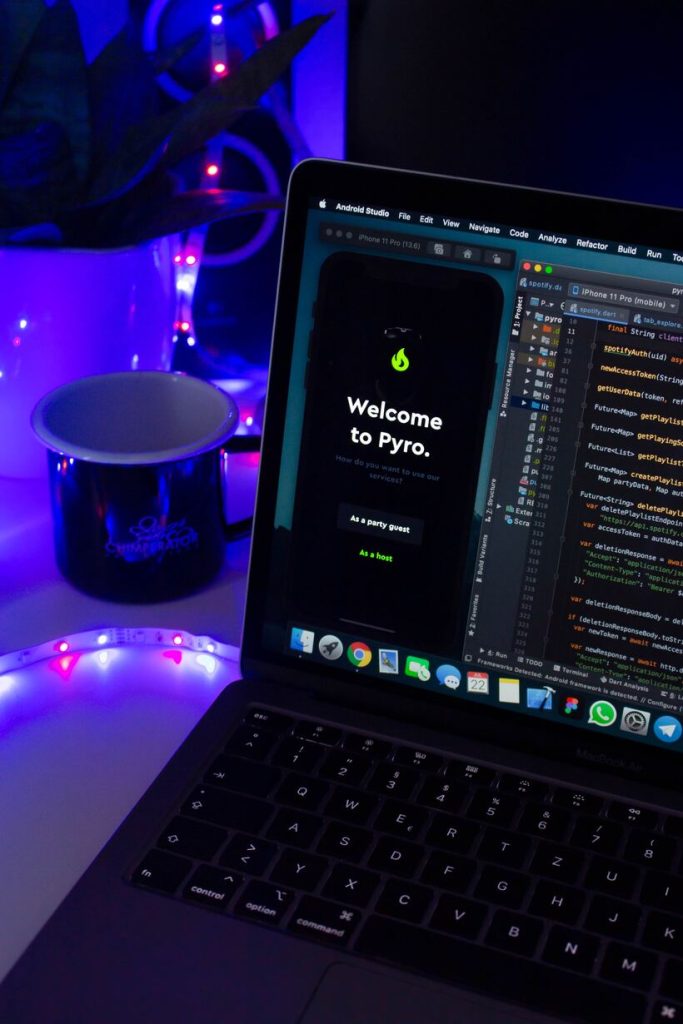In today’s fast-paced world, where efficiency and productivity are paramount, businesses are constantly seeking innovative ways to streamline their operations. And when it comes to enhancing the human resources (HR) department, chatbots and artificial intelligence (AI) have emerged as game-changers.
Gone are the days of waiting in long queues or dealing with slow response rates from HR personnel. With the advent of chatbots and AI technology, HR service delivery has taken a giant leap forward, revolutionizing how companies manage employee interactions and support.
In this blog post, we will explore the fascinating world of chatbots and AI in HR service delivery. We’ll uncover their benefits, examine successful implementation examples, debunk common misconceptions surrounding them, address potential concerns that arise along the way, and peek into what lies ahead for these futuristic technologies. So buckle up as we embark on an exciting journey into the future of HR service delivery!
Benefits of Using Chatbots and AI in HR Service Delivery
In today’s fast-paced world, where efficiency is key, chatbots and AI have revolutionized the way HR service delivery operates. Gone are the days of long waiting times and endless back-and-forth emails. With chatbots, employees can get instant responses to their queries round-the-clock.
One of the major benefits of using chatbots in HR service delivery is the reduction in response time. Employees no longer have to wait for a human representative to address their concerns; instead, they can receive immediate assistance from a chatbot programmed with accurate information.
Another advantage is the scalability that comes with using AI-powered chatbots. These virtual assistants can handle multiple inquiries simultaneously, ensuring that all employee requests are addressed promptly without overwhelming HR staff.
Deploying chatbots ensures consistency and accuracy in responding to employee inquiries since they follow predefined protocols set by HR experts. This eliminates any potential errors or inconsistencies that may arise due to human oversight or misinterpretation of policies.
Implementing AI-driven analytics enables organizations to gain valuable insights into employee behavior patterns and trends which can inform decision-making processes regarding workforce management strategies or identifying areas for improvement within the organization.
Integrating chatbots and AI into HR service delivery provides numerous advantages including improved response times, increased scalability capabilities, enhanced accuracy and consistency while reducing administrative burden on HR teams – ultimately resulting in an enhanced employee experience throughout their journey with an organization.

Examples of Successful Implementation in Companies
1. ABC Corporation: ABC Corporation, a leading tech company, implemented chatbots and AI in their HR service delivery to streamline employee onboarding. The chatbot guides new hires through the orientation process, answering frequently asked questions and providing necessary information. This has significantly reduced the workload for HR professionals and improved the overall experience for new employees.
2. XYZ Bank: XYZ Bank integrated chatbots into their HR operations to enhance employee self-service capabilities. Employees can now easily access information about benefits, payroll, and leave policies using a simple messaging interface. This has empowered employees to find answers quickly without having to wait for HR assistance.
3. DEF Manufacturing: DEF Manufacturing leveraged AI-powered chatbots to automate their recruitment process. The chatbot screens job applicants based on predefined criteria and conducts initial interviews via text or voice messages. This has not only saved time but also allowed HR professionals to focus more on selecting qualified candidates for further evaluation.
4. GHI Healthcare: GHI Healthcare introduced conversational AI in its HR support system to provide personalized assistance 24/7. Employees can ask questions about healthcare plans, schedule appointments with doctors, or get advice on wellness programs conveniently through the company’s intranet platform or mobile app.
These examples demonstrate how companies across various industries have successfully utilized chatbots and AI technology to improve their HR service delivery processes.
Common Misconceptions about Chatbots and AI
When it comes to chatbots and AI in HR service delivery, there are a few common misconceptions that need debunking. Let’s clear the air and separate fact from fiction.
Misconception 1: Chatbots will replace human HR professionals.
This is far from the truth. While chatbots can handle basic inquiries and tasks, they cannot replace the expertise, empathy, and decision-making abilities of human HR professionals. Instead of replacing humans, chatbots complement their work by handling routine queries, freeing up time for HR teams to focus on more strategic initiatives.
Misconception 2: Chatbots lack personalization.
Some may think that chatbot interactions are robotic and impersonal. However, with advancements in natural language processing (NLP) technology, chatbots can now understand context, tone of voice, and even emotions. This allows them to provide personalized responses based on individual employee needs while maintaining a conversational tone.
Misconception 3: Implementing AI is too complex.
While implementing AI technology may seem daunting at first glance, many user-friendly platforms exist today that make it easier than ever for organizations to adopt chatbot solutions without extensive technical knowledge or resources. These platforms often offer pre-built templates and customizable options that streamline the implementation process.
Misconception 4: Chatbot data poses security risks.
Data security is indeed a valid concern when it comes to any technological solution. However, reputable providers ensure robust security measures are in place to protect sensitive employee information shared during interactions with chatbots. Encryption protocols and strict access controls help safeguard data confidentiality.
Misconception 5: Employees won’t trust or use chatbot services.
While initially skeptical about new technologies like chatbots, employees often find them useful once they experience their benefits firsthand. As long as companies communicate transparently about how these tools improve efficiency and enhance employee experiences rather than replacing human interaction entirely, employees are likely to embrace and utilize chatbot services.
Potential Concerns and How to Address Them
1. Privacy and Data Security: One of the biggest concerns when it comes to using chatbots and AI in HR is the privacy and security of employee data. Companies need to ensure that robust measures are in place to protect sensitive information. This can be achieved through encryption, secure servers, regular audits, and compliance with relevant data protection regulations.
2. Lack of Personal Touch: Some employees may feel uncomfortable interacting with a machine instead of a human for their HR needs. To address this concern, companies can customize chatbot responses to sound more personal or even provide an option for live chat with HR representatives if necessary.
3. Technical Glitches: Like any technology, there is always a risk of technical glitches or system failures which could impact the effectiveness of chatbots in delivering HR services. To mitigate this concern, regular maintenance checks should be conducted, and backup plans should be in place so that manual assistance can be provided if needed.
4. Employee Resistance: Employees might resist using chatbots initially due to unfamiliarity or fear of job displacement by automation. To overcome this concern, companies can provide training sessions on how to use these tools effectively and highlight the added benefits they bring such as faster response times and 24/7 availability.
5. Ethical Considerations: As AI becomes more sophisticated, ethical considerations arise regarding bias or discriminatory decision-making algorithms used within chatbots for recruitment or performance evaluations purposes. It’s crucial for organizations to ensure transparency in their AI systems’ processes while continuously monitoring them for fairness and accuracy.
By addressing these potential concerns head-on through proactive measures such as enhanced security protocols, personalized interactions options when needed, robust maintenance procedures, employee education programs, and ongoing ethical oversight, companies can successfully integrate chatbots
and AI into their HR service delivery model.
The Future of HR Service Delivery with Chatbots and AI
As we look ahead, it is clear that chatbots and AI will continue to reshape the landscape of HR service delivery. The potential for these technologies to streamline processes, improve efficiency, and enhance employee experiences is immense.
One area where chatbots and AI are expected to have a significant impact is in recruitment. With the ability to analyze resumes, conduct initial screenings, and even schedule interviews, chatbots can automate time-consuming tasks for recruiters. This frees up their time to focus on more strategic aspects of talent acquisition.
In addition to recruitment, chatbots and AI can also revolutionize training and development within organizations. Virtual assistants powered by AI can provide personalized learning recommendations based on an employee’s skills gaps or career goals. This not only saves time but ensures that employees receive relevant training tailored to their individual needs.
As technology continues to advance, we can expect chatbots and AI to become even more sophisticated in understanding natural language processing (NLP) capabilities. This means that interactions with these virtual assistants will become increasingly conversational and human-like.
Another area where the future holds promise is in employee engagement surveys. Rather than relying solely on annual feedback forms or pulse surveys sent via email, companies may leverage chatbot technology for real-time data collection and analysis. Employees could interact with a bot through messaging platforms or intranet portals at any time they choose – resulting in more accurate insights into overall sentiment within the organization.
Conclusion
As technology continues to advance, chatbots and AI are revolutionizing HR service delivery. These intelligent systems have the potential to streamline processes, improve efficiency, and enhance employee experiences. By leveraging chatbots and AI in HR, organizations can provide faster response times, personalized support, and access to information round the clock.
The benefits of using chatbots and AI in HR service delivery are undeniable. They can automate routine tasks such as answering frequently asked questions or providing onboarding assistance. This frees up HR professionals to focus on more strategic initiatives that drive organizational success.
Several companies have already successfully implemented chatbots and AI in their HR departments. For example, IBM’s Watson Assistant has transformed how employees interact with their HR system by providing instant answers to queries through a conversational interface. Similarly, Unilever’s U-Chatbot has improved its recruitment process by engaging candidates in real-time conversations.
Despite these successes, there are some common misconceptions about chatbots and AI that need addressing. Many fear that these technologies will replace human jobs entirely when they are actually designed to complement human efforts rather than replace them. Additionally, concerns around data privacy and security need careful consideration during implementation.
Looking ahead into the future of HR service delivery, we can expect even greater advancements in chatbot capabilities with natural language processing becoming more sophisticated over time. Chatbots may also integrate with other emerging technologies like virtual reality or augmented reality for immersive employee training experiences.



No Comments
Leave a comment Cancel